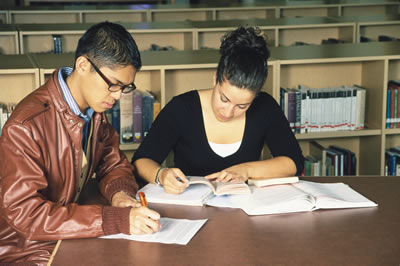With more and more content available to researchers of all ages, the skills needed to discern the credibility of what we read is on the decline. Media literacy is slipping, and the result is inaccurate information presented as truth and proliferated.
This month, we will look at what is happening to media literacy, what is causing its decline, and what we can do to cultivate media literacy in our children, in our families, and in ourselves.
Media literacy is learning how to discern the accuracy of information and credibility of its source when reading, watching, and listening. By middle school, preteens are online 7.5 hours a day, and by age 18, 88% of young adults get their news from social media feeds. At the same time, a Stanford University study found that 82% of middle school-aged children CANNOT distinguish a real news story from sponsored content. Social media also creates an “echo chamber effect” in which friends tend to re-share the same or similar content, and the news you get fits the opinions and biases of those on your friends list.
Stanford University also found that students judge the credibility of media content NOT on its source, but rather on how detailed the content is, and on whether or not there is a large photo accompanying the text.
While more and more schools are making an effort to teach media literacy, fewer and fewer schools now have librarians – a position specifically intended to teach research skills. Regardless of what your child or the children in your life are learning in the classroom, you can teach and model media literacy through your interactions.
Below are some tips to teaching media literacy that will help you brush up on your fact-checking too!
1. Research Together
Include your kids in your research. Find out what topics they are interested in and learn about them together. This way, you can gain insight into how they instinctively check for accuracy and jump on teachable moments. When you get your news, visibly seek information from various news sources. Let them see you reading different newspapers, watching different news shows, and reading different articles on the same topic to get the full story. Explain this as you go.
2. Teach General Research Tips
As a general research tip, tell them to check multiple sources on the same news to get the big picture and identify inconsistencies. Another general research tip is that if the article is less than 100 words, they need to do more research. Also, let the kids in your life know that Google rankings don’t reflect the credibility of the content. Often, kids will be told or overhear people telling others to “Google it.” They need to understand what Google is, how it works, and how it can be used as a valuable tool rather than as misguidance.
3. Encourage Lateral Reading
This means when you read something, look up the author or the source at the same time as the article. This doesn’t mean reading the “about” section in the source itself, or on the website of the organization or author that produced the content. Run a separate search on the source to reveal what the source’s relationship is with the material they put out. Lateral reading is something we should all strive for, given that most of us get a good chunk of our news from social media shares. Proliferation of false, biased, and misguided information is becoming more and more rampant as people share articles without checking for accuracy. A big part of checking the credibility of information is learning the biases and motivations of the source. Remember, 82% of middle schoolers can’t tell the difference between an actual article and sponsored content. Lateral reading is an important tool to combat this.
Incorporating media literacy into your day-to-day life will encourage HEALTHY SKEPTICISM. If the children in your life see you fact-checking, source-checking, and only relaying information as truth after making sure of its accuracy, they will take it to heart in ways that they won’t if you simply tell. REMEMBER! The best way to teach healthy skepticism and media literacy is to MODEL it.

